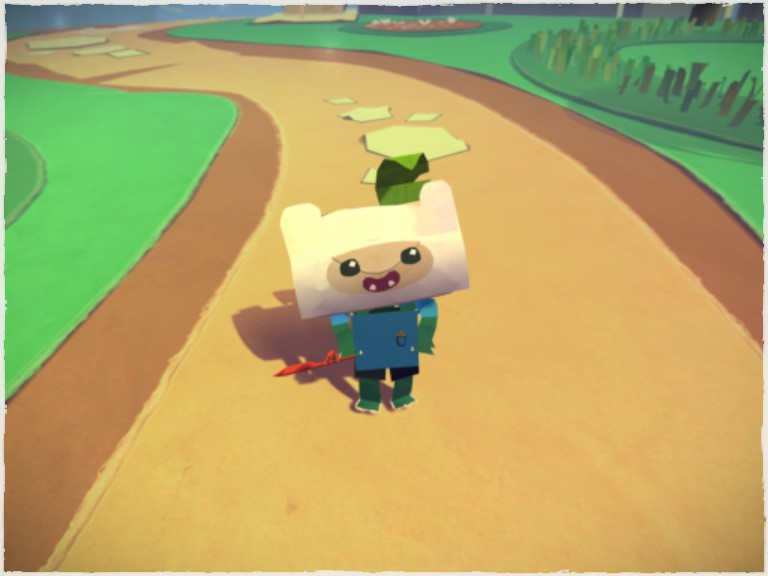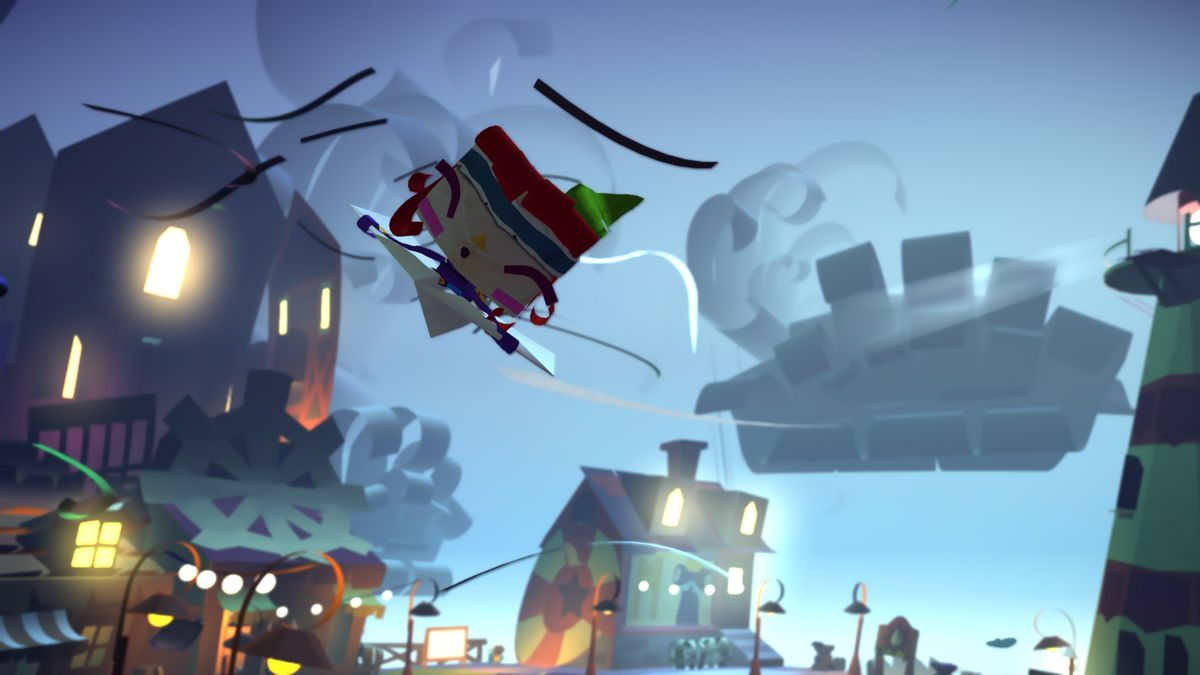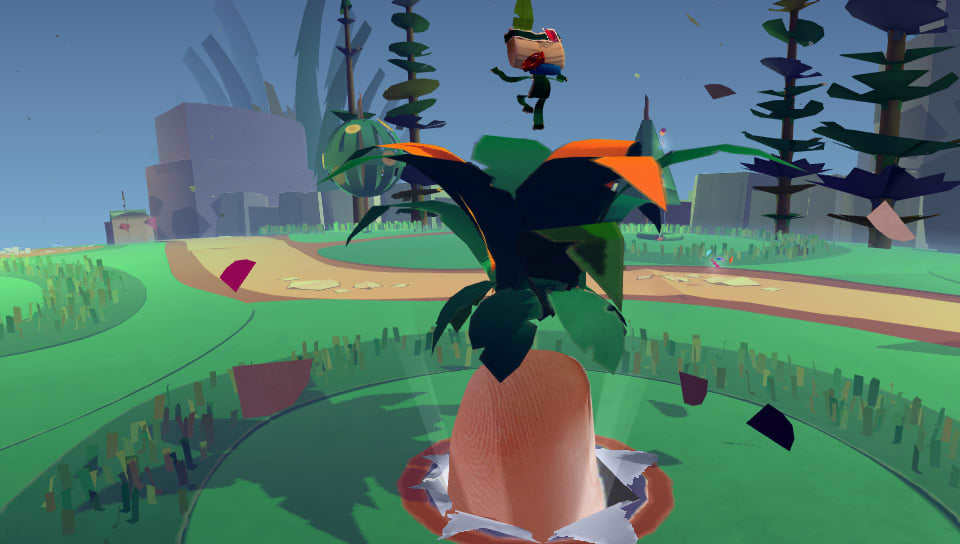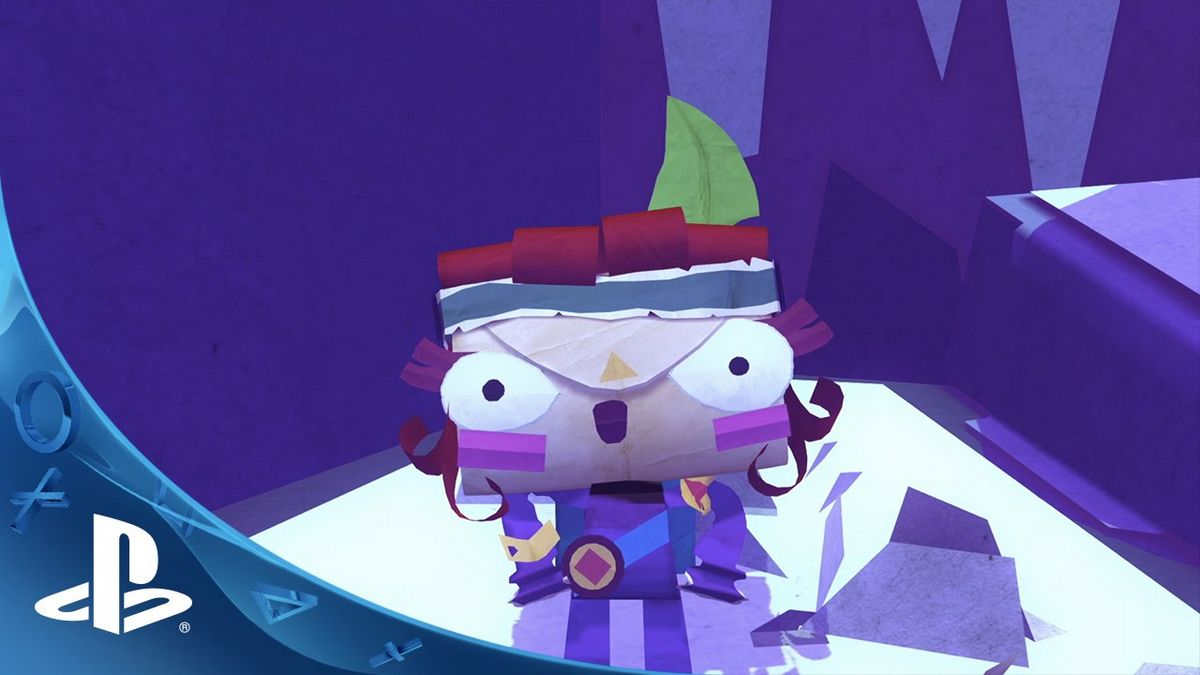Tearaway, developed by Media Molecule and released in 2013 for the PlayStation Vita, is a game that stands out from its peers not only aesthetically but also in terms of gameplay mechanics. The game takes place in a charmingly whimsical papercraft world where players control the character of either Iota or Atoi, who are on a mission to deliver a message to the player in the real world. What sets Tearaway apart from other games is its innovative use of the PS Vita’s hardware features such as touchpad controls, rear camera integration, microphone input, and tilt sensors to create an immersive experience that feels both tactile and interactive. In this article, we will explore how Tearaway revolutionized platforming games with its creative approach to gameplay design and discuss why it remains one of Media Molecule’s most beloved titles till date.
- A Comprehensive Analysis of the Game Mechanics in Tearaway: An Exploration of Paper-Themed Gameplay Elements
- The Artistic Design and Visual Appeal of Tearaway: Examining the Unique Aesthetic Choices That Make It Stand Out
- Soundscapes and Music Composition in Tearaway: Uncovering How Audio Enhances the Gaming Experience
- Character Development and Narrative Structure in Tearaway: Dissecting How the Storyline Evolves Across Different Levels
- Interactivity and User Engagement in Tearaway: Highlighting how Players Can Create Their Own In-Game Content Through Customization Options
A Comprehensive Analysis of the Game Mechanics in Tearaway: An Exploration of Paper-Themed Gameplay Elements
The game mechanics in Tearaway are designed to immerse players in a world made entirely of paper and encourage them to interact with the environment using various tactile gestures.
One of the most distinctive elements of Tearaway’s gameplay is its use of the DualShock 4 controller’s touchpad. Players can use their fingers to manipulate objects on screen, such as creating gusts of wind or bouncing characters off trampolines. This mechanic adds a level of interactivity that goes beyond traditional button inputs and makes players feel like they are physically interacting with the game world.
Another key element of Tearaway’s gameplay is its emphasis on customization. Players can create their own papercraft designs using virtual scissors and glue tools, which can then be shared with others online. In addition, players can also customize their character’s appearance by collecting stickers and outfits throughout their journey.
Overall, Tearaway offers a comprehensive analysis of how innovative game mechanics can help create immersive gaming experiences. Its paper-themed gameplay elements provide new ways for players to interact with the environment while also encouraging creativity and customization.
The Artistic Design and Visual Appeal of Tearaway: Examining the Unique Aesthetic Choices That Make It Stand Out
The designers have perfectly created an aesthetic that reflects the charm of papercraft, while also being visually appealing and engaging for players. The game’s world is crafted entirely from paper which adds a layer of immersion never seen before in gaming.
The art style of Tearaway is whimsical and endearing, with vibrant colors that bring the world to life. Everything in this game appears as if it has been handcrafted with precision, making the experience one-of-a-kind. It doesn’t just look good but feels great too; every scene transitions smoothly into another using clever camera angles and sweeping shots.
Furthermore, Tearaway’s visual appeal extends beyond just its graphics -the sound design is equally impressive. SFXs like tearing paper or crumpling sounds immerses players even more into its charming papercraft world.The overall effect of these aesthetic features makes playing Tearaway feel almost like stepping into an interactive storybook – with each page revealing something new to explore within this magical papery land.
In conclusion,Tearaway’s unique artistic design elevates it above other games on both technical and creative fronts.It stands alone as a true work of art thanks in part to the attention invested by developers into creating such intricate details.From gameplay mechanics down to minute elements like sound effects,the layers upon layers implemented can be often overlooked but they ultimately add up to make for an unforgettable journey through this beautifully designed universe made entirely out of paper.

Soundscapes and Music Composition in Tearaway: Uncovering How Audio Enhances the Gaming Experience
This game leverages audio to engage the players’ emotions, creating an immersive world that brings them closer to the action. The use of sound in Tearaway helps create a sense of place and establishes an emotional connection with the characters.
The game’s soundtrack is composed by renowned composer Kenneth Young and features a unique blend of orchestral, electronic, and folk-inspired elements. The musical pieces are carefully crafted to match each level’s theme, contributing to its narrative structure and gameplay mechanics.
Additionally, Tearaway utilizes dynamic sound effects that react to player actions such as walking on different surfaces or interacting with objects. These audio cues provide helpful feedback for players while also enriching their sensory experience.
Overall, soundscapes and music composition in Tearaway demonstrate how audio can enhance gameplay beyond just providing background noise. It plays an important role in establishing mood, immersing players into the game’s world-building process through its soundscape design choices while providing real-time feedback during gameplay interactions. Ultimately it is these subtle nuances that make games like Tearway feel truly alive for players who immerse themselves into this unique experience created by expertly designed audio techniques!

Character Development and Narrative Structure in Tearaway: Dissecting How the Storyline Evolves Across Different Levels
The game successfully manages to convey a compelling storyline by intertwining gameplay mechanics with story elements. Throughout the game, players are introduced to various characters who evolve and grow as they progress through different levels.
The narrative structure in Tearaway follows a traditional three-act structure, where each act introduces new challenges for the player while developing the game‘s overarching plotline. The first act establishes the characters and their motivations, setting up their journey into unknown territories. In contrast, the second act presents more complex obstacles for both characters and players alike, creating tension and conflict within the story arc. Finally, in the third act of Tearaway, all loose ends are tied together towards an epic conclusion.
Character development is also at play in Tearaway; throughout different levels, it becomes apparent that Sackboy isn’t just another run-of-the-mill hero but has his own personality traits that shape his actions throughout each level. Moreover, other supporting characters such as Papercraft birds gradually become more than mere companions on this journey; instead they develop vibrant personalities with specific backstories across different segments.
In conclusion, Teawary showcases how powerful storytelling can be when supported by engaging gameplay mechanics like papercraft creation kits or ball rolling physics engine which adds humor & problem-solving aspect alongside conventional platforming tropes . Through its compelling narrative combined with excellent character development techniques across varying environments ,Teawary provides a truly unforgettable gaming experience worth your time if you love immersive games!
Interactivity and User Engagement in Tearaway: Highlighting how Players Can Create Their Own In-Game Content Through Customization Options
The game’s main protagonist, Iota or Atoi (depending on the gender chosen), acts as a messenger to deliver a message from the real world to Tearaway’s paper-crafted world. As players progress through different levels of the game, they can customize their character with various materials such as stickers, colors, and patterns.

The customization options are integral to Tearaway’s gameplay mechanics and offer players an unprecedented level of interaction within the game. Players can draw their own designs using touchscreen controls on PlayStation Vita or create custom stickers using photographs taken with Vita’s built-in camera. These customization features allow players to personalize their experience in Tearaway and make it truly unique.
Furthermore, players can also interact with other characters in the world by taking photos of them using the camera feature and sending those images back out into social media platforms like Twitter or Facebook. This level of engagement highlights how Tearaway leverages user-generated content as part of its core gameplay loop.
Overall, Interactivity and User Engagement play critical roles in enhancing gameplay experiences for users while offering fresh perspectives on storytelling methods beyond traditional video games‘ narrative structures. In this regard,Tearaway is an excellent example where personalization leads to joyous interactions between gamers themselves!

In conclusion, Tearaway is a masterpiece of game design that immerses players in a whimsical world full of creativity and charm. From the stunning paper-craft visuals to the clever use of touch controls, every aspect of this game has been crafted with love and attention to detail.
The combination of platforming gameplay and interactive storytelling makes for an engaging experience that will keep players hooked from start to finish. The ability to customize your character with personalized papercraft creations adds an extra layer of depth and personalization to the already rich world.
Overall, Tearaway sets a new standard for imaginative gaming experiences that are both entertaining and thought-provoking. It is a shining example of what can be achieved when designers take risks and create games that push boundaries. For anyone looking for a fun-filled adventure filled with heart, humor, and originality- Tearaway is not one to miss!
Read More:- Experience the Magic of Paper Mario – A Fun-Filled Adventure Game! (68 characters).
- Unleash Your Inner Gamer with the Exciting Paper Mario: The Thousand-Year Door Game!.
- Experience the Beauty and Mystery of Tengami – a Captivating Game with Unique Japanese Art Style!.
- Immerse Yourself in the Thrilling World of Detroit: Become Human – A Game for Sci-Fi Fans! (69 characters).
- Discover the Epic Journey of Lost Odyssey Game: Immerse Yourself in a World of Fantasy and Adventure!.
- Experience Action-Packed Gameplay with Killzone: Mercenary – The Ultimate FPS Game!.
- Experience the ultimate RPG adventure with Divinity: Original Sin II – immerse yourself in a vast world of magic and mystery!.